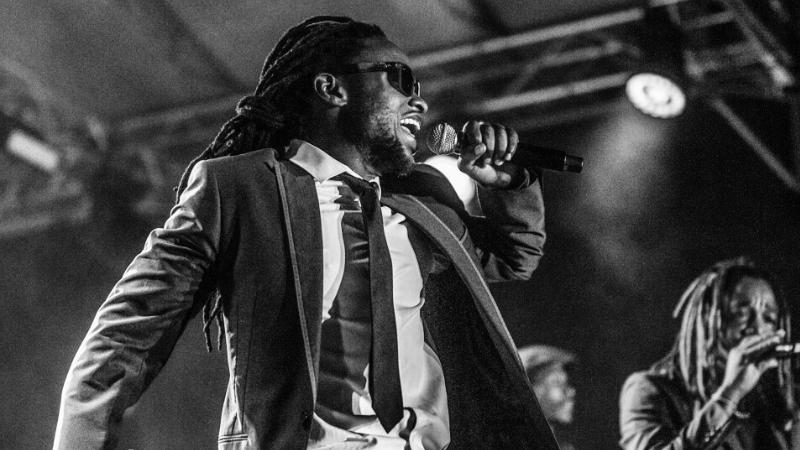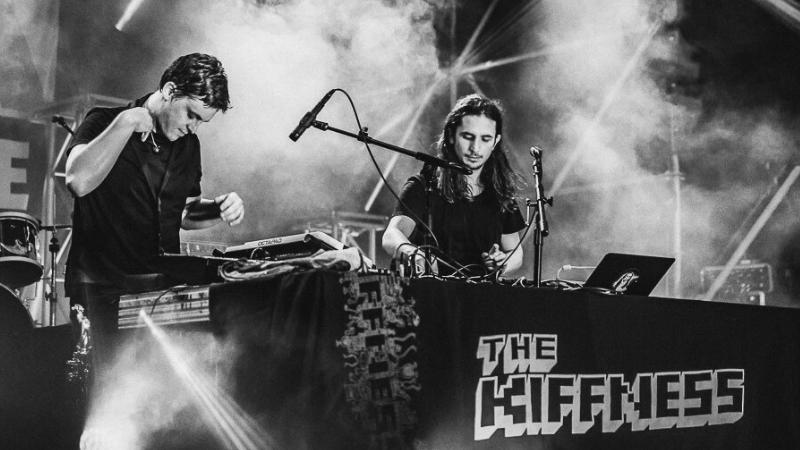
Music and photography go hand in hand, as both capture emotions and moments in time.
Photographers freeze the energy and vibe of live performances, letting fans relive those experiences later.
It’s important to explore this connection because it shows how different music genres shape photography, helping us appreciate both art forms more deeply.
Key Takeaways
- ★ Emotional Capture: Music and photography work together to capture and convey emotions, allowing fans to relive performances through impactful images.
- ★ Genre-Specific Styles: Different music genres dictate photography styles—metal uses dramatic angles and low light, pop thrives on bright colors and dynamic framing, indie focuses on authenticity, and EDM showcases vibrant lights and crowd interactions.
- ★ Unique Opportunities: Each genre offers distinct opportunities for photographers to convey its essence, whether through intensity, energy, or authenticity.
- ★ Narrative Importance: Concert photography tells a compelling story, reflecting both the performance and the audience’s experience, with each genre shaping its own unique narrative.
- ★ Practical Tips: Aspiring photographers should familiarize themselves with the venue, research the artist, select appropriate gear, master lighting, and be ready to capture spontaneous moments to enhance their skills.
How Do Different Genres Influence Photography Styles?
Different music genres influence photography styles by shaping the mood and composition of shots.
For instance, metal concerts often require dramatic angles and low light, while pop performances benefit from bright colors and dynamic framing.
Each genre’s unique energy guides photographers in telling distinct visual stories.

How Does Metal Music Shape Photography?
Metal concerts are filled with powerful sounds, headbanging fans, and dynamic lighting. These high-energy events can also be quite theatrical, creating an intense experience for both performers and the crowd.
To capture this intensity, I recommend using a wide-angle lens, I use the Canon 10-22mm, which allows you to include more of the scene in a single frame. This lens showcases the energy of both the performers and the audience, making the shot feel immersive and dynamic.
Additionally, employing low-light techniques and focusing on dramatic angles will further enhance the raw power of the performance.

What Unique Moments Can Photographers Capture at Indie Shows?
Indie concerts often have a more relaxed and personal vibe, fostering a connection between artists and fans.
To convey this authenticity, photographers can use candid shots that capture genuine moments, such as interactions between the performers and the audience.
Soft lighting and natural compositions can also enhance the intimate feel, allowing the raw emotions of the performance to shine through.

How Do Pop Performances Create Visual Excitement in Photography?
Pop performances often feature bright colors, elaborate staging, and highly choreographed routines, creating a visually appealing spectacle.
I personally like to use the Sigma 50mm Art lens for its sharpness and ability to capture details, but I know many photographers prefer the Canon 70-200 for its versatility.
To enhance their shots, photographers can use fast shutter speeds to freeze movement and capture wide angles to showcase the overall production. Focusing on the artists’ expressions and interactions with the audience can also bring out the excitement and energy that defines pop concerts.

How Do EDM Events Transform the Way Photographers Capture Energy?
The high-energy vibe of EDM events is all about pulsating beats, bright lights, and excited crowds.
Since DJs usually stand behind a table, photographers can make their shots interesting by focusing on the vibrant lights and the movement of the crowd.
Using fast shutter speeds can freeze moments of excitement, while longer exposures can capture the swirling lights. Highlighting the interaction between the audience and the visuals can really bring the energy of the scene to life.

How Can Photography Tell Stories in Concerts?
Narrative is important in concert photography because it helps tell the story of the performance and the audience’s experience.
Different music genres shape these stories; for example, metal often shows intense energy, while indie focuses on closeness and connection.
By capturing specific moments, photographers can highlight what makes each genre special and create engaging visual stories.

What Practical Tips Can Help Aspiring Concert Photographers?
If you’re an aspiring concert photographer, these practical tips can help you capture great moments at live shows.
- Know the Venue: Familiarize yourself with the layout and lighting of the venue beforehand. This helps you plan your shots and find the best angles.
- Research the Artist: Understand the artist’s style and performance habits. This can help you anticipate key moments to capture.
- Use the Right Gear: Bring a fast lens for low-light situations and consider a variety of lenses to adapt to different genres. A wide-angle lens is great for capturing the crowd, while a telephoto lens can help you zoom in on performers.
- Pay Attention to Lighting: Different genres have different lighting setups. For example, EDM shows often feature bright, colorful lights, while indie concerts might have softer, more intimate lighting.
- Experiment with Settings: Use fast shutter speeds to freeze action, but also try longer exposures to capture light trails. Adjust your ISO based on the venue’s lighting.
- Be Mindful of the Audience: Capture not just the performers but also the crowd’s reactions. This adds context and emotion to your photos.
- Be Ready for Movement: Concerts are dynamic, so stay alert and ready to capture unexpected moments.
Common Questions
What Photo Mode Is Best for Concerts?
Use an ISO of 1600 to 3200 or higher if needed. Set your shutter speed to 1/200 or faster. Choose auto white balance, but you can adjust this later if you shoot in RAW. Make sure to turn on continuous focus or burst mode.
What Type of Photography Is Concert?
Concert photography is about capturing musicians performing any type of music, live dance shows, and live comedy acts. It doesn’t include portraits of musicians or photos taken outside of live performances.
How to Be a Concert Photographer?
To become a concert photographer, start by shooting small local shows. Get photo passes for bigger shows, connect with different publications, start a photography blog to show your work, and think about licensing your photos.
What Are the Different Types of Music Photography?
Music photography includes a few categories: concert pictures, band photos, and portraits.
What Challenges Do Concert Photographers Face?
Concert photographers often deal with low lighting, fast-moving subjects, and unpredictable environments. They must also navigate crowd dynamics and sometimes limited access to certain areas, making it important to be adaptable and ready to capture the best moments.
In Conclusion
Concert photography is a unique and dynamic genre that captures the energy and emotion of live performances across various music styles.
By understanding the specific characteristics of different genres and applying practical techniques, aspiring photographers can enhance their skills and storytelling abilities.
With the right preparation, equipment, and a willingness to face the challenges of the concert environment, photographers can create stunning images that resonate with audiences and immortalize unforgettable moments.
Whether you’re just starting out or looking to refine your craft, embracing the art of concert photography can lead to rewarding experiences and captivating visual narratives.



